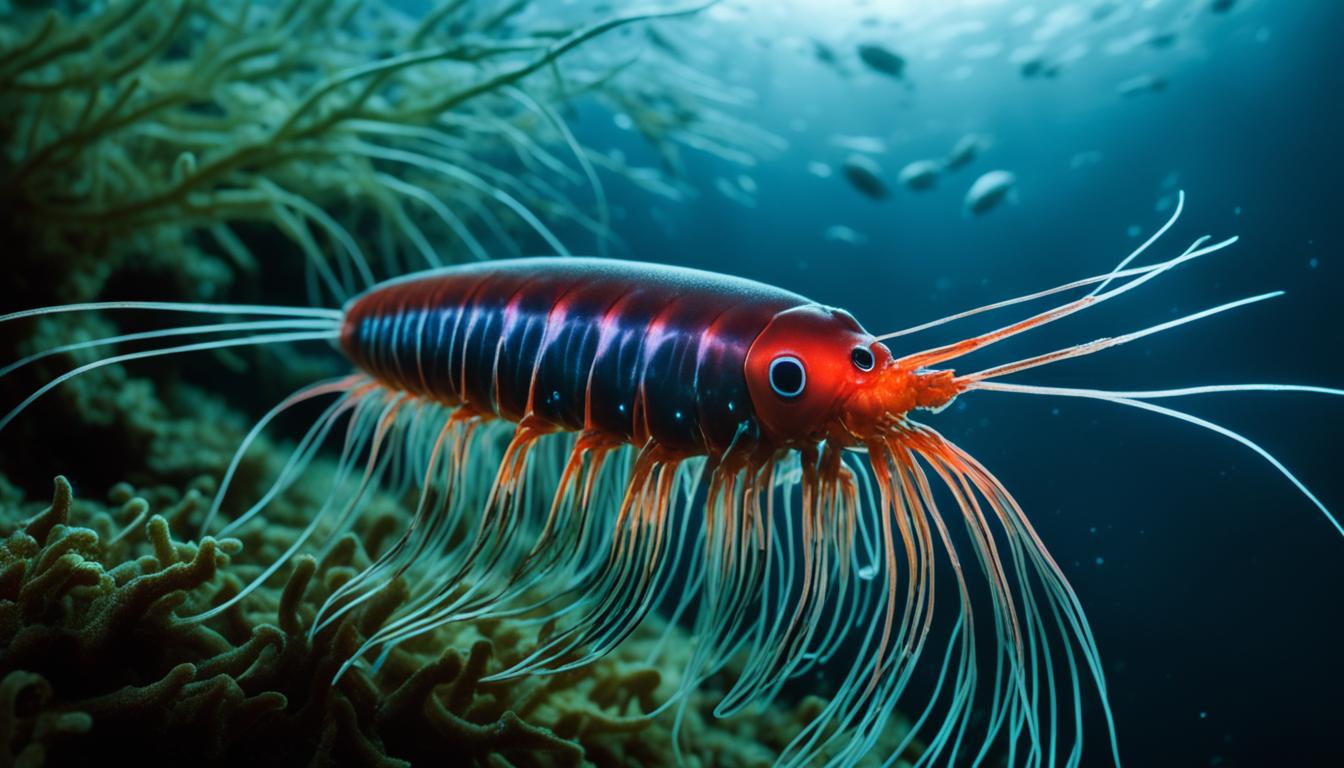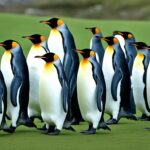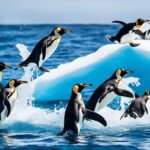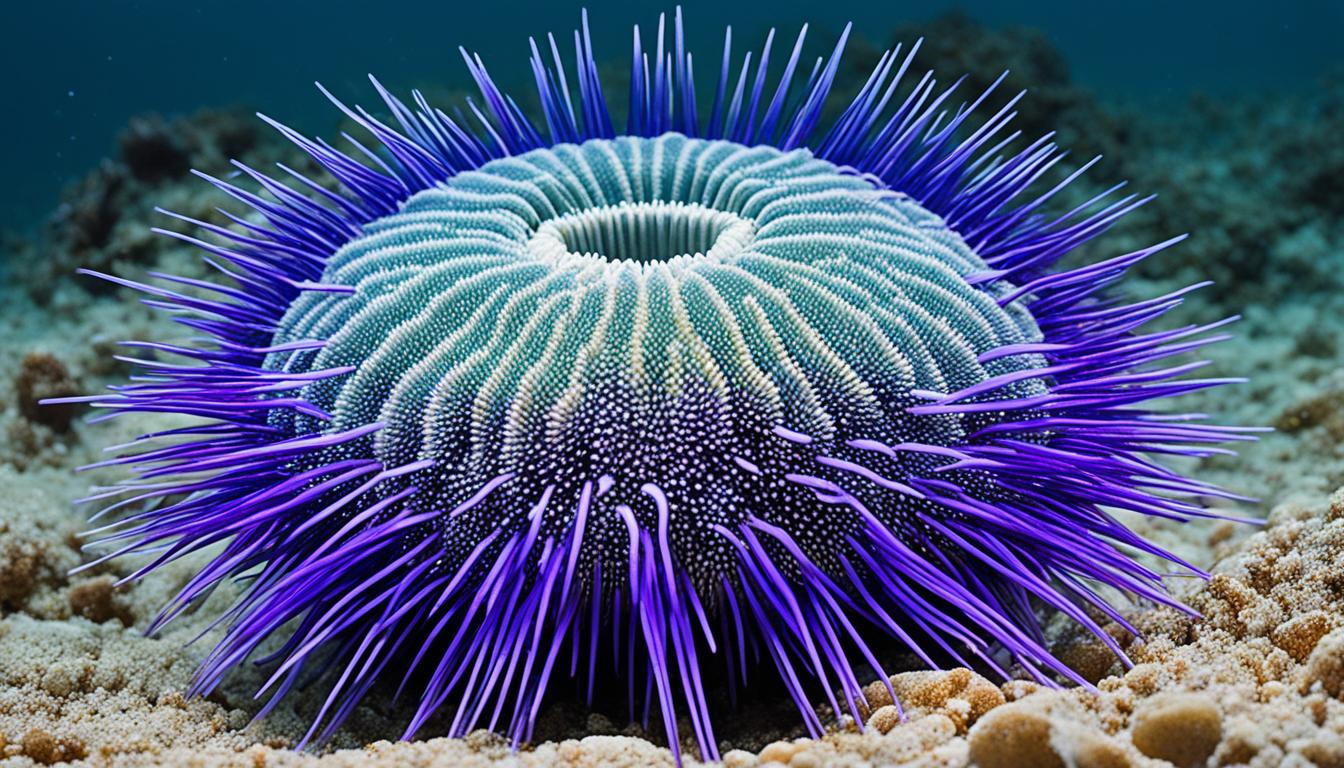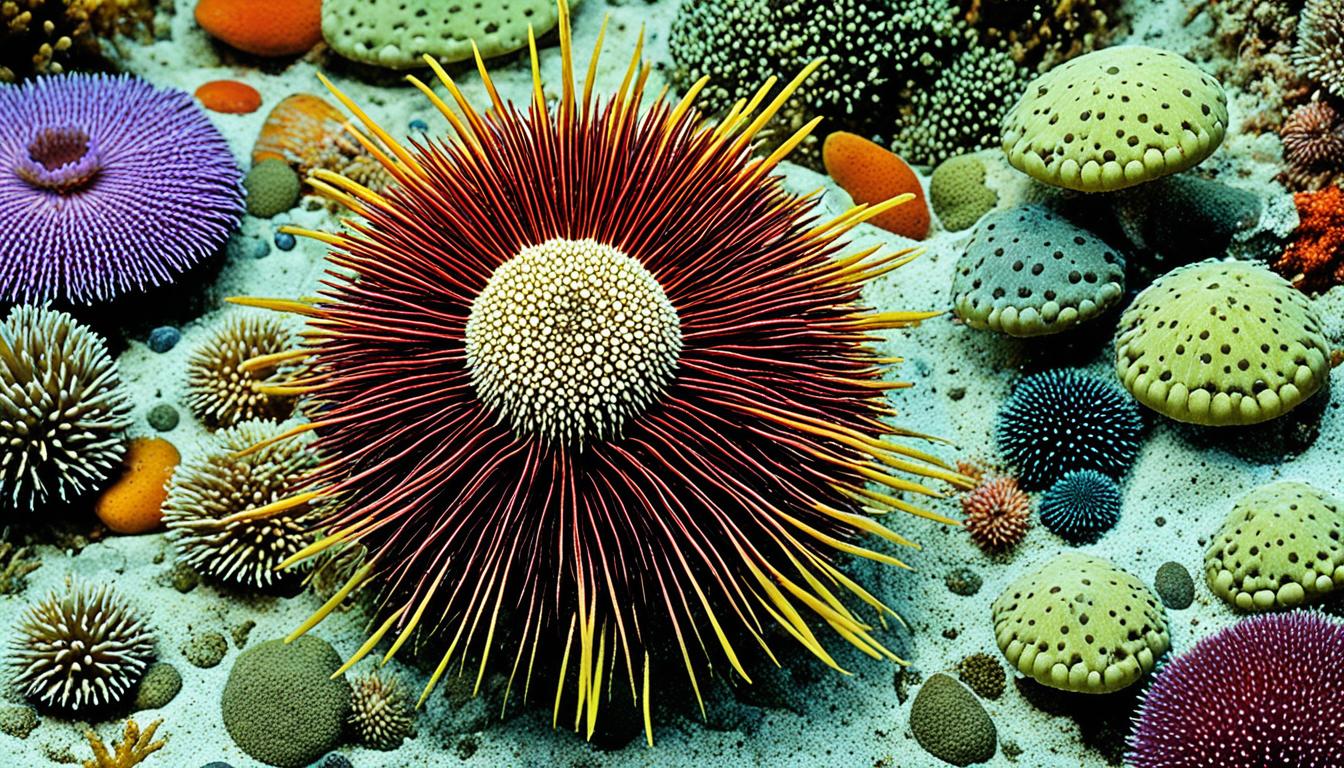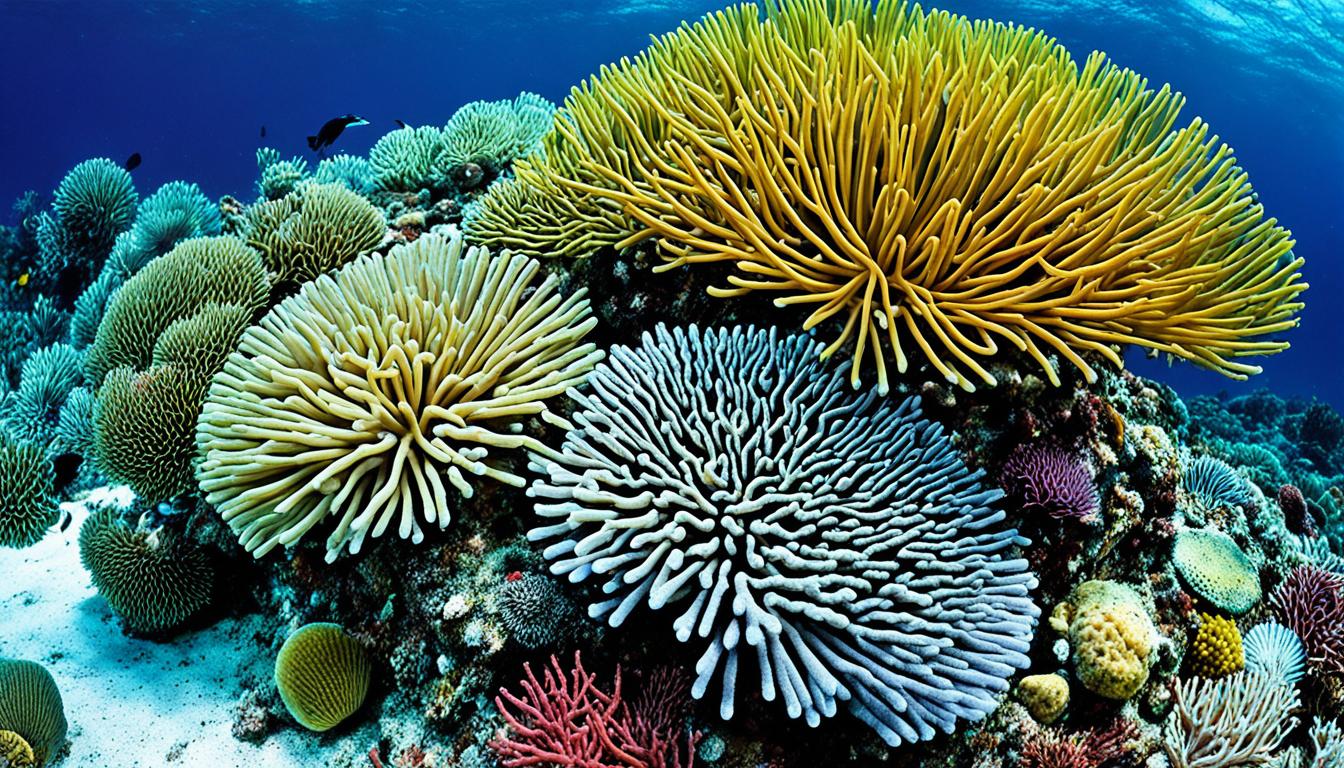Krill are amazing creatures that live in tough marine places, especially in the Southern Ocean. They have special ways to deal with things like changing temperatures and finding food. These adaptations help them survive and also make them a key food source for many sea creatures.
Looking into the world of krill, you’ll see how these small beings are important for the ocean’s food chain. They help with carbon cycling, which affects the climate. Their success in different environments shows how life can adapt to tough conditions.
Understanding the Importance of Krill in the Ecosystem
Krill are key players in the Southern Ocean’s ecosystem. They play a big role in the food web and help with environmental processes. This shows how krill adapt to their habitat.
Role of Krill in the Southern Ocean
Antarctic krill (Euphausia superba) are crucial to the Southern Ocean. They eat phytoplankton, which helps energy move up the food chain. As filter feeders, they play a big part in nutrient cycling and ocean productivity.
There are about 400 million tonnes of krill, showing their importance. Their eating habits help control carbon cycles in the ocean. This helps them adapt to their habitat and act as energy links. Krill also help move carbon to deeper waters, fighting climate change effects.
Predators that Depend on Krill
Krill are a main food source for many marine predators. These include:
- Whales
- Seals
- Penguins
- Various fish species
Krill support these species and affect the whole marine food chain. The link between krill and their predators shows the balance in marine ecosystems. It shows how krill keep the ecosystem healthy.
| Predator | Type | Dietary Habits |
|---|---|---|
| Whales | Mammal | Filter feeding on krill |
| Seals | Mammal | Hunt krill and fish |
| Penguins | Bird | Primarily feed on krill |
| Fish | Various Species | Consume krill as a primary food source |
How do krill adapt to their environment?
Krill make amazing changes to survive in the tough ocean. They have both physical traits and behaviors that help them avoid predators and live in different places.
Physical Characteristics for Survival
Krill have special physical features that help them survive. Their clear bodies let them hide in the water. The reddish spots on them help them blend in with the ocean’s colors. Their big black eyes help them see dangers coming.
They can grow up to 6 cm, letting them find food and shelter in different depths. When food is scarce, they can shrink in size to survive.
Behavioral Adaptations to Predation
Krill have behaviors that help them stay alive. They often swim together in large groups, making it harder for predators to catch them. This group behavior helps with finding food and navigating the ocean.
When they sense danger, krill can swim fast or dive deep to escape. These quick actions show their natural ability to avoid predators. Their behaviors greatly improve their chances of staying safe in the water.
Krill Habitat Adaptation Strategies
Krill have amazing ways to live in the Southern Ocean’s diverse ecosystems. They face many environmental challenges. These challenges help them adapt and thrive in changing conditions.
Living in Diverse Water Conditions
Krill can live in many types of water. They can be found in bright surface waters and deep, dark ocean areas. This lets them find different food sources and avoid predators.
Impact of Ice and Light on Krill Habitat
Ice is very important for krill habitats. It changes how much light gets through the water, which affects krill food. As ice moves, it changes the environment for krill.
The amount of sunlight at different depths also changes krill behavior and where they live. This shows how they can adapt to new environments.
| Environmental Factors | Impact on Krill |
|---|---|
| Water Temperature | Affects metabolic rates and reproductive cycles. |
| Salinity Levels | Influences krill distribution and feeding patterns. |
| Ice Cover | Creates habitats that provide food sources and protection. |
| Light Availability | Determines the depth distribution of krill populations. |
Krill Survival Strategies During Environmental Changes
Krill adapt to environmental changes to survive. They change their diet and adjust to seasonal shifts. This flexibility helps them thrive in a changing habitat.
Feeding Habits and Diet Changes
Krill eat mostly phytoplankton. But, they change their diet with the seasons. When phytoplankton is scarce, they find other food like detritus or algae under the ice. This shows how adaptable they are to find food.
Winter Survival Techniques
Winter is tough for krill due to cold and less food. They use special survival methods:
- Storing energy: They save energy in the warmer months for winter.
- Migration: Some krill move to deeper, warmer waters.
- Reduced activity levels: They slow down to save energy when food is scarce.
These strategies help krill survive the tough winter. They show how important their diet and adaptability are for survival.

| Strategy | Description | Effectiveness |
|---|---|---|
| Storing Energy | Accumulating reserves during warmer months | High |
| Migration | Moving to deeper waters for warmth | Moderate |
| Reduced Activity | Lowering metabolic rate | High |
Environmental Challenges Encountered by Krill
Krill face many environmental challenges that threaten their survival and ability to adapt. These challenges come from both nature and human actions. They affect krill populations in big ways.
Climate Change and Its Effects on Krill Populations
Climate change has a big impact on krill. Rising ocean temperatures and changes in ice patterns harm their homes. This makes it harder for krill to find food, leading to fewer krill.
This drop affects the whole marine ecosystem. It hurts predator species that depend on krill for food.
Human Impact on Krill Habitats
Humans are a big threat to krill habitats. Overfishing and pollution harm the Southern Ocean’s balance. These actions make it harder for krill to survive and adapt.
Understanding how these factors interact is key to knowing what the future holds for krill.
| Environmental Challenge | Impact on Krill | Broader Ecological Effects |
|---|---|---|
| Climate Change | Disruption of breeding cycles and food availability | Decline in dependent predator populations |
| Overfishing | Reduction in krill biomass | Imbalance in the marine food web |
| Pollution | Habitat degradation | Threats to biodiversity in marine ecosystems |
The Future of Krill Adaptability
The future of krill is crucial as they face fast-changing environments. Warming temperatures in the Southern Ocean make it hard for them to find good places to live and feed. Understanding how krill adapt to these changes is key to seeing how they might change their ways and homes.
Krill are facing many challenges, and they must adapt to survive. Scientists are crucial in tracking these changes and studying how krill adapt. By learning how they react to changes, we see why saving krill and their ocean home is so important.
The survival of krill depends on many things, like adapting to climate change and conservation efforts. With efforts to lessen human impact, we can help krill survive in a changing world. By tackling these issues, we help our oceans and many marine species that rely on krill.

